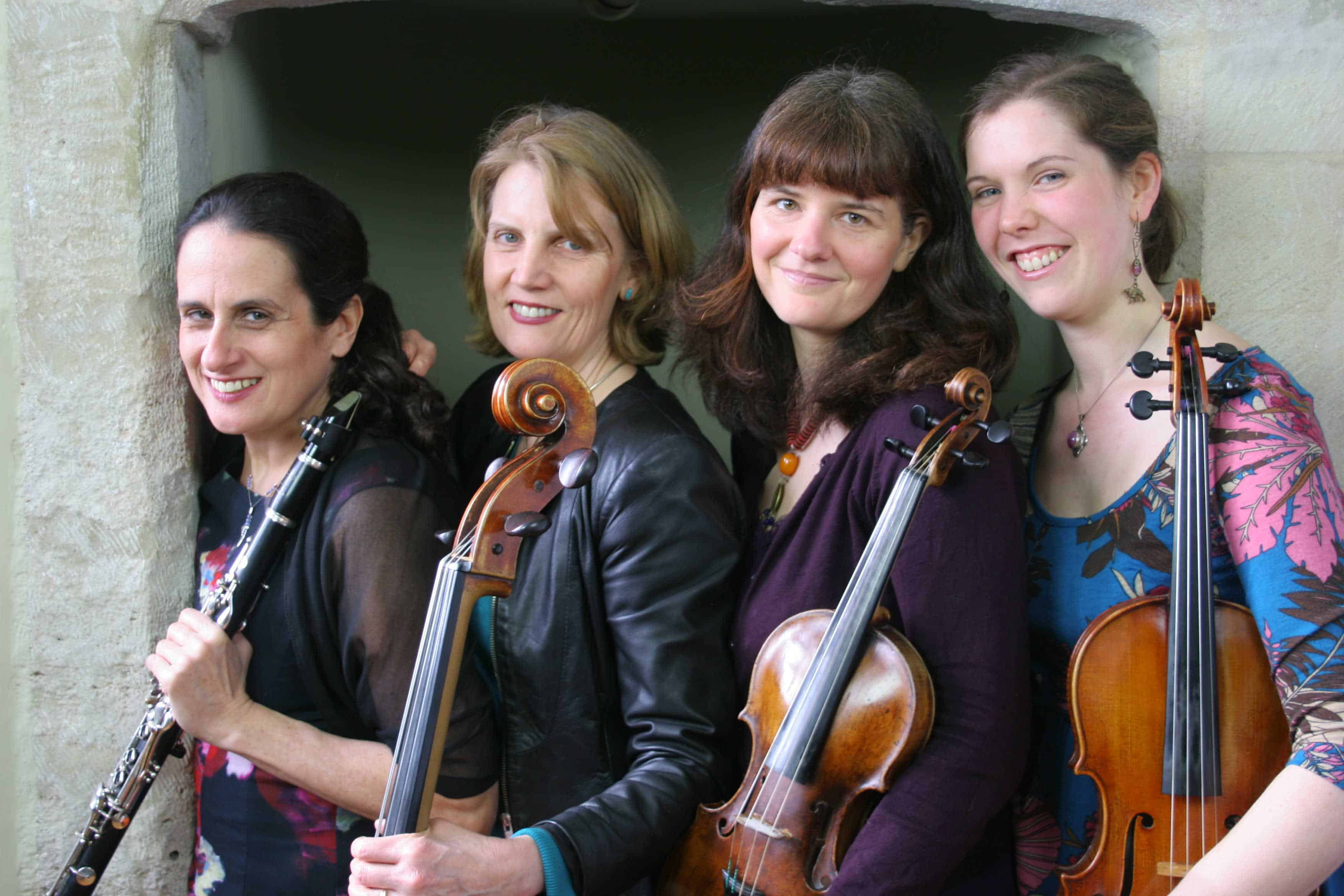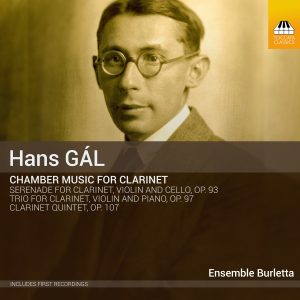For us in the Ensemble Burletta, a chamber-music group exploring chamber music for clarinet in various combinations, the music of Hans Gál is a joyful and important discovery. His writing for the clarinet is exquisitely beautiful, and he has written for configurations which can make concert programmes interesting and varied. The Trio for clarinet, violin and piano can sit comfortably alongside some more outwardly modern compositions – as, for example, Bartók’s Contrasts or Stravinsky’s Soldier’s Tale – and Gál’s Clarinet Quintet can hold its own with any of the better-known clarinet quintets. But it’s not merely a question of its ‘combinability’, so to speak: I think his clarinet chamber music, with its expressive, melancholic tunes and humoresque finales, is probably some of the most beautiful music ever written for these combinations.
Recording this repertoire was a satisfying and intensive process, much like making three separate recordings. The Clarinet Quintet is a very late fruit of Gál’s creativity: he was 87 years old when he wrote it, and he was an absolute master of composing. We found the piece required much care and attention to detail, especially the balance between the instruments, as Gál writes such beautiful lines for all of them, and the counterpoint calls for particular awareness and planning on our part, so as to be able to achieve transparency and clarity for the listener.
The Trio for clarinet, violin and piano took us into a completely different world and needed a different style and approach. Less intimate than the pieces with strings, here three soloists compete with one another. The piece is beautiful and colourful with opportunities for the instruments to showcase a variety of characters. The piano has the most counterpoint; the other instruments argue or agree with each other. Hans Gál’s music never becomes matter of fact; it always contains twists and turns, and layers of detail reveal themselves even after many readings and performances.
The Serenade is a spectacular work for clarinet, violin and cello. For this I used a different violin with slightly more muted and darker sound. We wanted to recreate some of the darker moods of the years between the two World Wars with this piece and to mirror the uncertainties of the Gál family. Out of all the three pieces the Serenade is the most fragile, most complicated and most intimate. The mastery of counterpoint is again to be admired, as is the virtuosity of the constant interchange between the musical lines. There is so much else here, too: the thematic material is beautifully expressive, with a dark, melancholy at the heart of the piece; the return of the Intermezzo in the middle of the last movement as a nostalgic reminder; the finish of the movement with a light-hearted joke. We love this combination, and strangely there is not much written for it, and so we hope this composition may inspire composers to write for it in the future. Indeed, we chose the name for our ensemble from this piece, from the second-movement Burletta (burlesque), a scherzo in 2/4.

